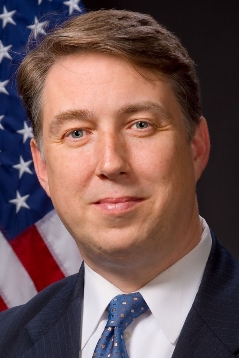
Blog |
A champion of sustainability
Collectively regarded as the founder of the green chemistry movement, Dr. Paul Anastas received a B.S. from the University of Massachusetts at Boston and earned his M.A. and Ph.D. in chemistry from Brandeis University. He’s worked for two U.S. presidents, in the White House Office of Science and Technology Policy. At Yale University he was the inaugural Teresa and H. John Heinz III Professor in the Practice of Chemistry for the Environment at the School of Forestry and Environmental Studies, and Director of the Center for Green Chemistry and Green Engineering. In 2009 President Obama nominated Dr. Anastas for the prestigious position of Assistant Administrator for the Office of Research and Development and Science Advisor to the United States Environmental Protection Agency (EPA).
Dr. Anastas has an extensive record of leadership in government, academia, and the private sector and has been praised for his innovations in the area of environmentally-friendly chemical design with numerous awards and accolades. On Tuesday, April 5, 2011 at 6:00 p.m. at UCLA’s Lenart Auditorium in the Fowler Museum Dr. Anastas will deliver the Spring 2011 Institute of the Environment and Sustainability Oppenheim Lecture. This event is cosponsored by the Sustainable Technology & Policy Program (STPP), a joint venture of the UCLA Law School and School of Public Health. In a special interview with the Institute of the Environment and Sustainability he elaborated on the field of green chemistry and green engineering, the importance of environmental science education, his role at the EPA and the organization’s efforts to promote sustainability.
What initially interested you in green chemistry?
People ask how I came to define the term “Green Chemistry” and elucidate the principles of the field. My training was in synthesizing potential anti-cancer drugs. When I joined the U.S. EPA at the age of 27, I told my mentor, “instead of trying to design chemicals that can treat cancer, I’d like to work on a system where we make all chemicals so that they can never cause cancers or other toxicity in the first place.” In 1991, the first green chemistry research activities were being launched.

What is the green chemistry component of sustainability?
Green chemistry is the chemistry of sustainability. That means design of materials that are the basis of our society and economy such that they will not harm people on the planet and are sustainable. If our approaches to sustainability challenges (for example, climate, clean water, food production, energy, etc.) are themselves not sustainable, we will not be making real progress. Green chemistry is about doing the right things in the right way.
Why should students pursue the study of green chemistry and green engineering?
The skills, training and awareness that are given to students of chemistry and engineering allow them to have a great influence on designing tomorrow—that means that the products, processes and systems that are the basis of our society and our economy have the potential to be either sustainable or unsustainable and with green chemistry and green engineering, the students of today can ensure that tomorrow looks very different from our unsustainable present. What green chemistry and engineering have shown is that we can design to ensure that you can meet environmental, economic and societal goals for synergistic benefit. The accomplishments in these fields so far represent just a small fraction of the power and potential of what is possible. Meeting environmental and economic goals simultaneously means doing well by doing good. Green chemists and engineers have the ability to impart sustainability across all scales from molecular structures to infrastructure.
Describe your role as EPA’s Assistant Administrator and Science Advisor.
As the EPA Assistant Administrator and Science Advisor, I have responsibility for both the generation of internal and externally conducted research that forms the scientific basis of the regulatory decisions of the agency and in providing scientific advice to the EPA administrator on the wide array of science issues that the agency faces on topics ranging from climate change, to toxic chemicals, to ecosystem preservation.
You’ve stated that EPA’s goal of sustainability is the organization’s “true north” and declared sustainability the “path forward.”
When we say that sustainability needs to be our “true north,” we are saying that in the great challenges we face, it is critical to know the proper direction of our work. While we could manage risk and impacts of particular environmental insults in unsustainable ways, it is important to recognize that every effort in environmental protection actions need to be sustainable in all possible instances.
What are the most pressing sustainability (environmental, societal and economic) problems today? How is the EPA confronting these challenges?
The EPA has had tremendous accomplishments in addressing the most obvious and egregious problems facing the environment and human health.
These achievements of dramatically cleaner air, water and land have been attained at the same time as this country has seen robust economic growth. As we recognize that many of the sustainability challenges we face today are often far more subtle, complex, and integrated, our approaches at the EPA and, more importantly, throughout society, need to be equally holistic and systems-oriented. Moving from a focus on reducing individual negative impacts on a problem-by-problem basis to a broader perspective of ensuring environmental, economic, and societal health is a significant and important change in thinking. It is this broader perspective that the EPA is embracing and moving toward becoming ever more effective in protecting human health and the environment.
